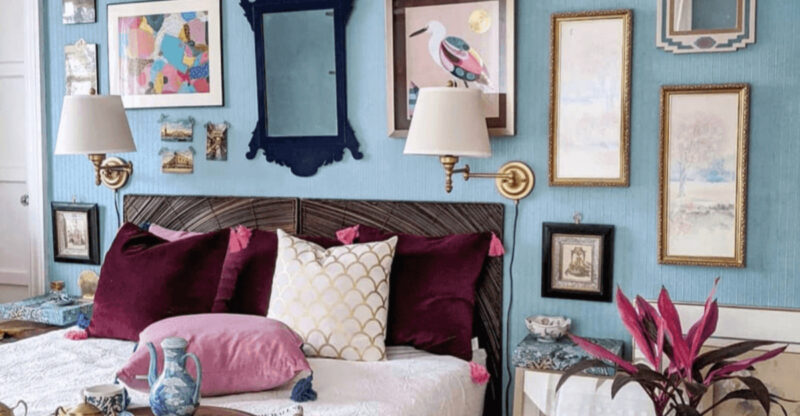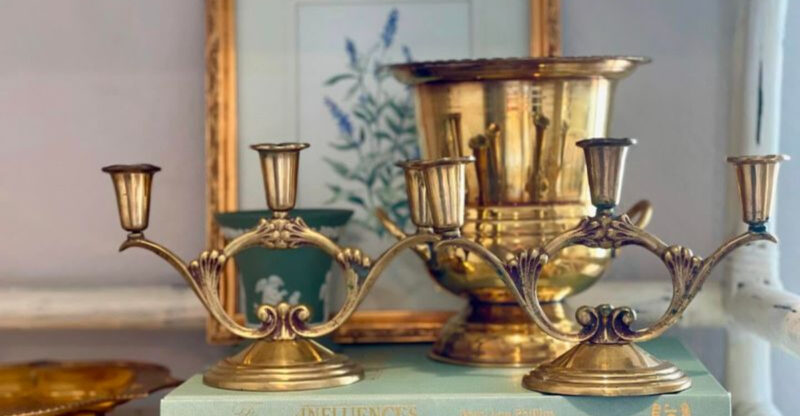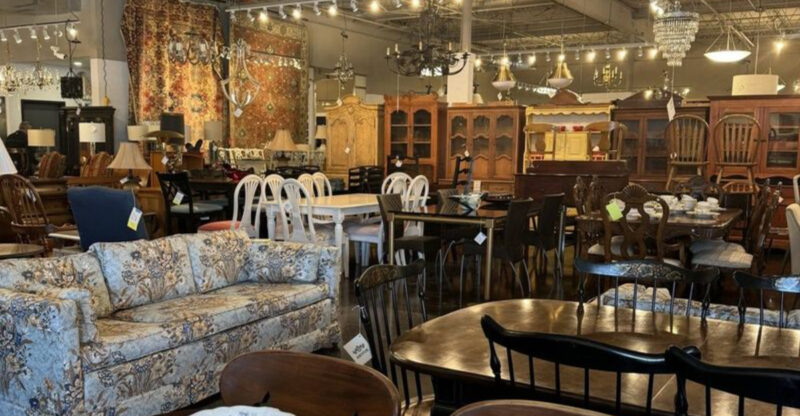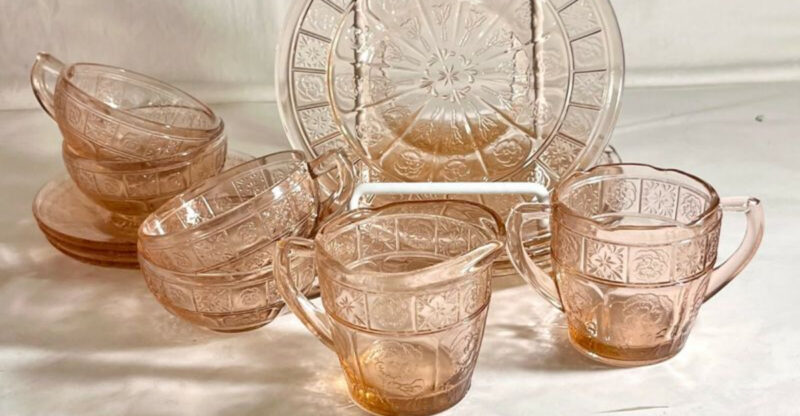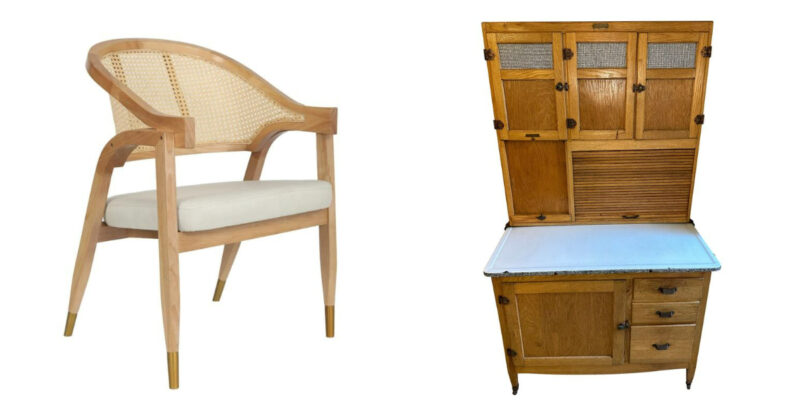Collectors In Pennsylvania Say These 9 Antiques Will Boom And 9 You Should Sell Now
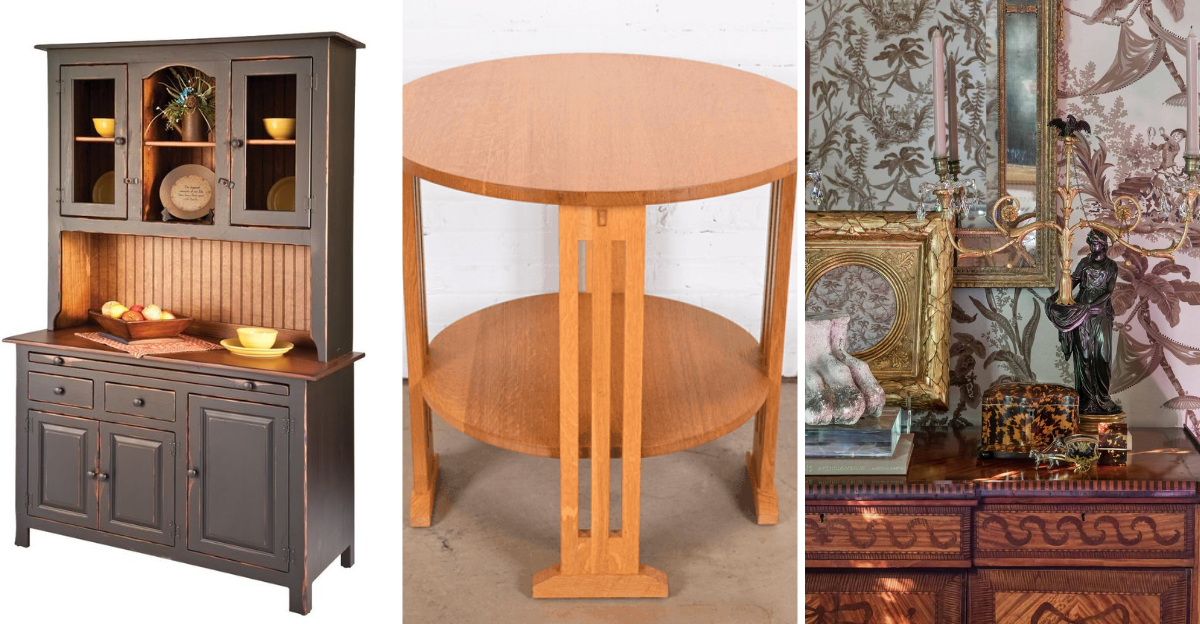
Pennsylvania has long been a treasure trove for antique enthusiasts, with its rich history of furniture craftsmanship dating back to colonial times.
Today’s savvy collectors are noticing clear trends in which pieces are gaining value and which are losing appeal in the Keystone State’s bustling antique markets.
I’ve gathered insights from top Pennsylvania dealers about which wooden treasures you should hold onto and which might be better off finding new homes before their values drop further.
1. Solid Walnut Dining Tables Are Skyrocketing
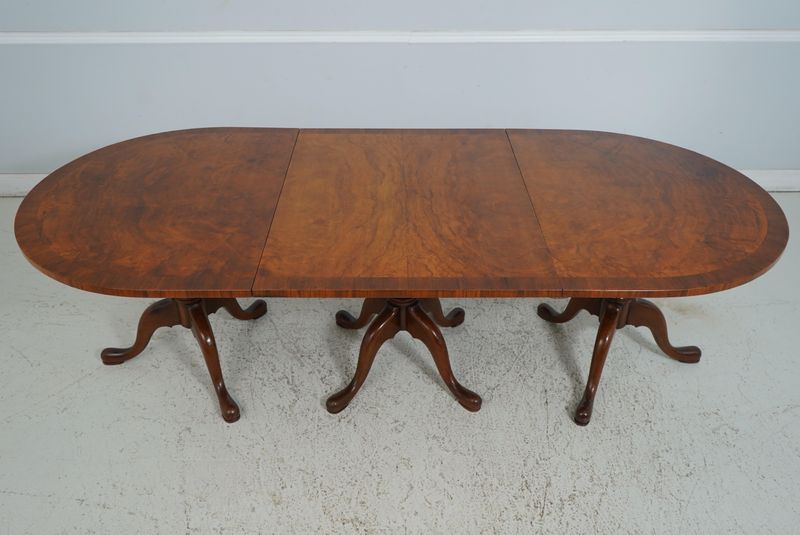
Pennsylvania collectors can’t get enough of solid walnut dining tables, especially those crafted between 1880-1920. Their warm, rich grain and impressive durability make them increasingly sought-after as modern families rediscover the joy of gathering around heirloom-quality pieces.
I’ve watched prices climb steadily over the past three years, with exceptional examples fetching 30-40% more than they did in 2020. Walnut’s natural beauty simply can’t be replicated in today’s mass-produced furniture.
If you’re lucky enough to own one, professional restoration is worth considering – even minor repairs and careful refinishing can dramatically increase value while preserving the patina that collectors adore.
2. Mid-Century Teak Sideboards Command Premium Prices
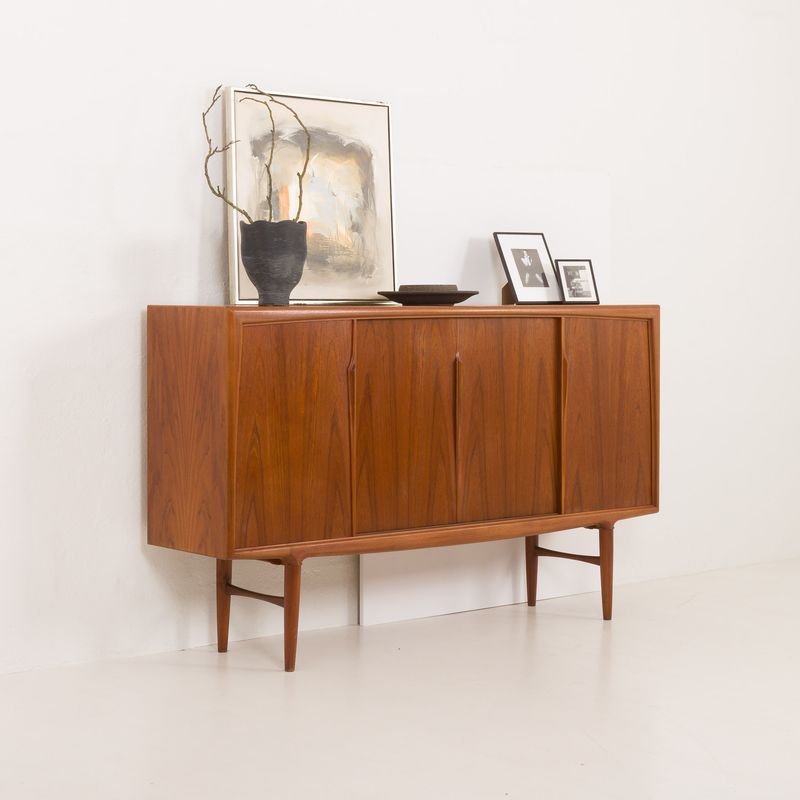
Danish-inspired teak sideboards from the 1950s-70s have captivated younger Pennsylvania collectors with deep pockets. Their clean lines, warm wood tones, and practical storage make them perfect for today’s homes that blend vintage with contemporary aesthetics.
Many Pennsylvania dealers report waiting lists for quality pieces by designers like Hans Wegner and Arne Vodder. The sustainable aspect of these pieces also appeals to environmentally-conscious buyers who appreciate well-made furniture that has already stood the test of time.
Look for original hardware and intact veneer when investing in these beauties – even small imperfections can significantly impact value in this increasingly competitive market.
3. Hepplewhite Mahogany Chairs Gaining Serious Momentum
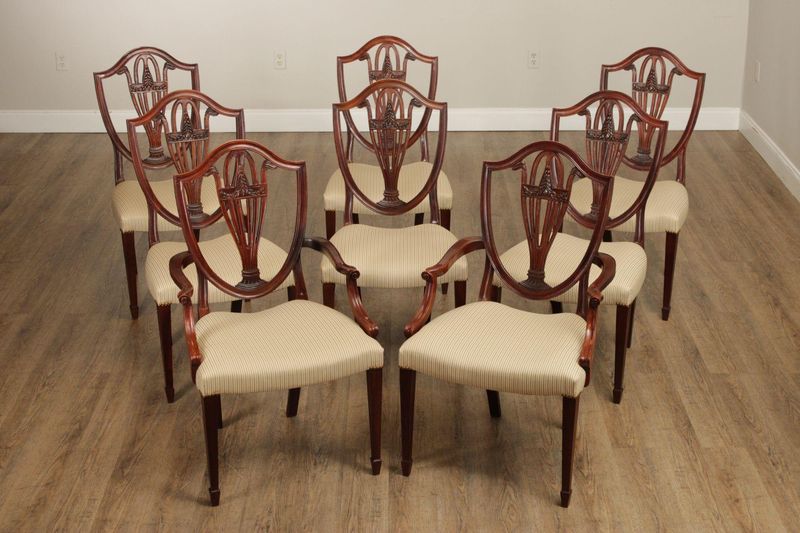
Graceful and refined, Hepplewhite style mahogany chairs are experiencing a remarkable resurgence among Pennsylvania collectors. Their shield-back designs and delicate proportions bring timeless elegance to dining rooms without overwhelming the space like bulkier furniture styles.
The Pittsburgh Antique Guild reports that matched sets of six or more chairs have nearly doubled in value since 2018. Serious collectors particularly prize examples with original finish and minimal repairs.
When hunting for these treasures, I recommend examining the joinery carefully – quality Hepplewhite reproductions from the 1940s can also command impressive prices if well-executed, though genuine period pieces (1790-1815) remain the ultimate prize.
4. Arts & Crafts Oak Dressers Fetch Record Prices
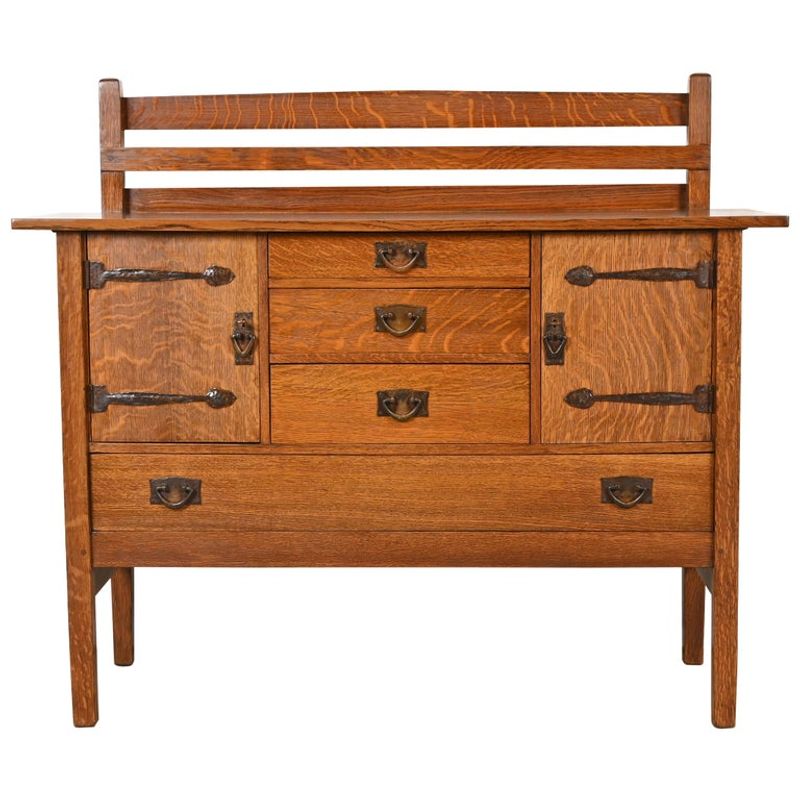
Pennsylvania’s rich Craftsman heritage makes it a hotbed for Arts & Crafts oak dressers, with Stickley and Limbert examples leading the charge. Their honest construction, quarter-sawn oak grain, and handcrafted details speak to today’s desire for authenticity and craftsmanship.
Collectors near Philadelphia report paying premium prices for pieces with original finish and hardware. The simple, functional design philosophy of these dressers aligns perfectly with contemporary minimalist sensibilities.
If you’re considering investing, focus on condition and provenance – documented history can add thousands to the value. Even lesser-known makers command strong prices when the piece features exceptional joinery and those distinctive, exposed tenons that define the style.
5. Shaker Cherry Blanket Chests Becoming Collector Favorites
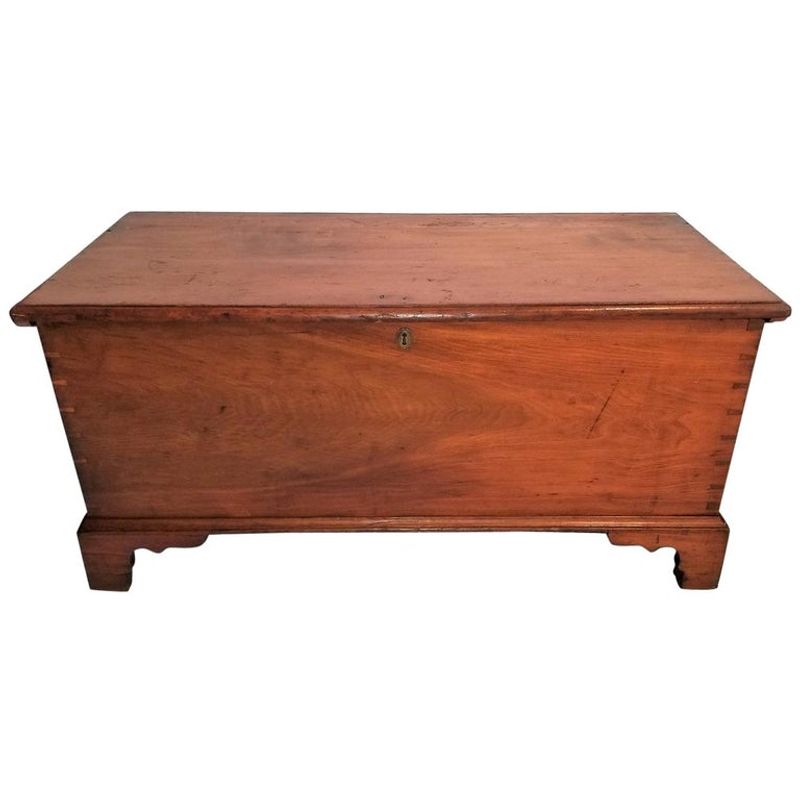
Thanks to Pennsylvania’s historic proximity to Shaker communities, collectors prize these cherry blanket chests for their understated beauty. With meticulous dovetailing and pure, functional lines, they embody a timeless aesthetic that resonates strongly today.
Harrisburg dealers tell me authentic Shaker pieces have seen steady 15-20% annual appreciation. The rich patina that develops on cherry over decades simply can’t be replicated, making original-finish examples especially valuable.
Smart collectors look for examples with original wooden pulls and hand-cut dovetails. Even Shaker-inspired reproductions from the early 20th century are climbing in value, though at a slower pace than genuine community-made pieces from the 19th century.
6. Victorian Walnut Bedroom Sets Making Surprising Comeback
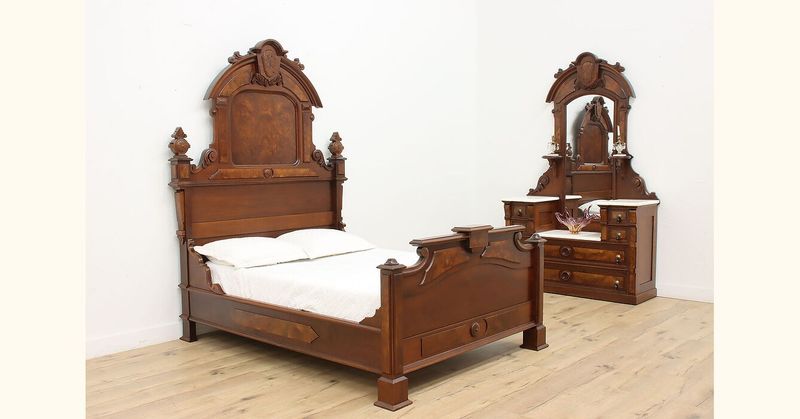
Once dismissed as fussy and outdated, Victorian walnut bedroom sets are experiencing an astonishing renaissance in Pennsylvania’s antique markets. Their intricate carved details and substantial presence appeal to homeowners with larger bedrooms in historic homes throughout the state.
Matching sets with bed, dresser, washstand and armoire can command upwards of $15,000 in excellent condition. The quality of quarter-sawn walnut used in these 1860-1890 pieces simply doesn’t exist in today’s furniture market.
When examining potential investments, check for original marble tops, intact mirror plates, and consistent patina across all pieces. The most desirable examples feature Renaissance Revival or Eastlake styling with original brass hardware and minimal veneer damage.
7. Mission-Style Hall Trees Climbing In Value
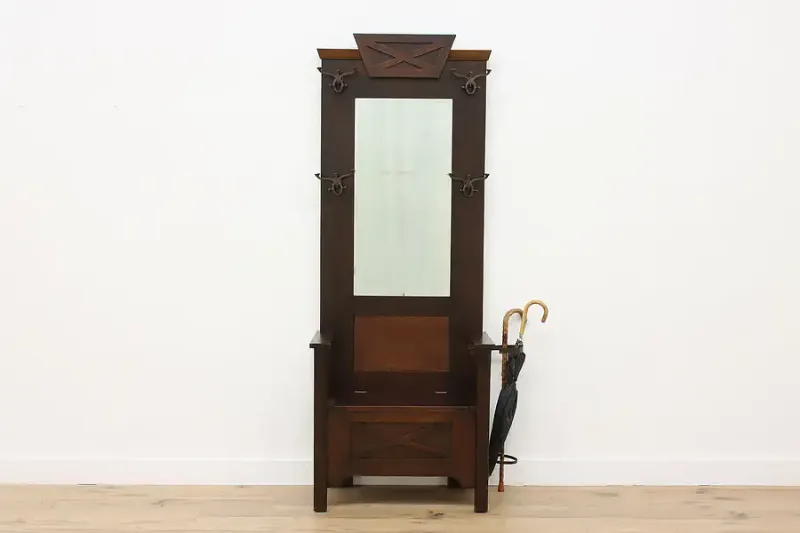
Mission-style hall trees have captured the hearts of Pennsylvania collectors looking for practical entryway solutions with historical significance. Their combination of seating, storage, and coat hooks makes them perfectly suited for today’s mudroom-conscious homeowners in four-season Pennsylvania climates.
Allentown dealers report that authentic Gustav Stickley examples have tripled in value over the past decade. Even unmarked pieces in the Mission style command strong prices when constructed from quarter-sawn oak with original finish.
The most valuable examples include original mirrors and hardware intact. If you’re hunting for investment-worthy pieces, look for clean lines, mortise-and-tenon joinery, and those telltale vertical slats that define the Mission aesthetic – they’re signals of quality that savvy Pennsylvania collectors immediately recognize.
8. Vintage Bentwood Rocker Chairs Rocking The Market
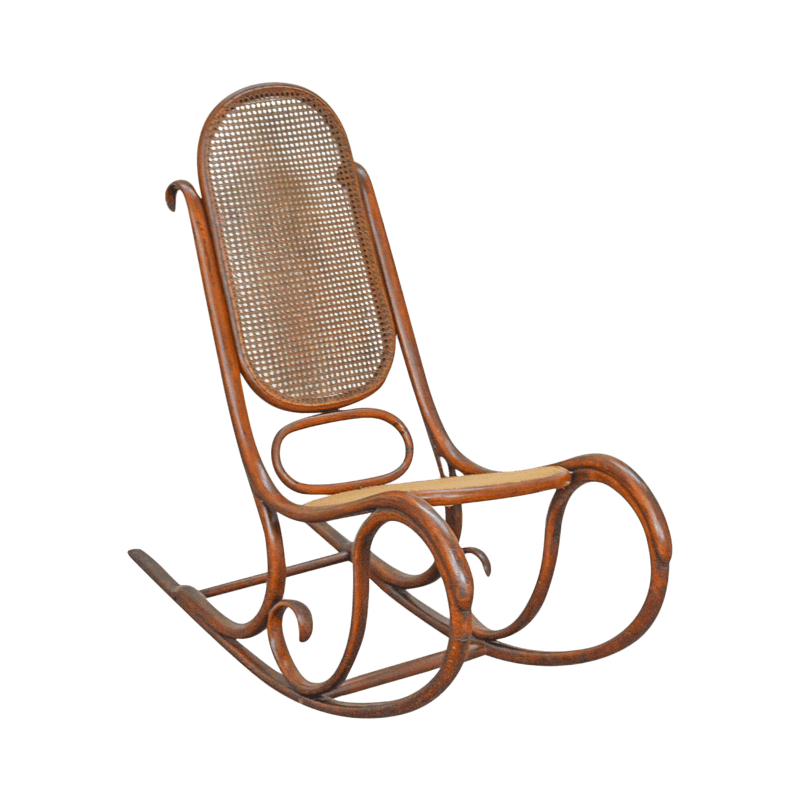
Pennsylvania collectors are paying premium prices for authentic bentwood rockers, especially those with manufacturer’s labels from Thonet or Mundus. Their graceful curves and engineering ingenuity represent a pivotal moment in furniture design history that continues to fascinate serious collectors.
The Lancaster Historical Society notes that original-finish examples with intact caning have seen values increase by 25% annually since 2019. These chairs blend seamlessly with both traditional and contemporary interiors, making them versatile investments.
When evaluating potential purchases, examine the bentwood joints carefully for repairs or cracks. The most valuable examples feature original paper labels, pressed seat patterns, and that honey-colored patina that only comes from a century of gentle use and proper care.
9. Early 20th-Century Baby Cradles Seeing Surprising Demand
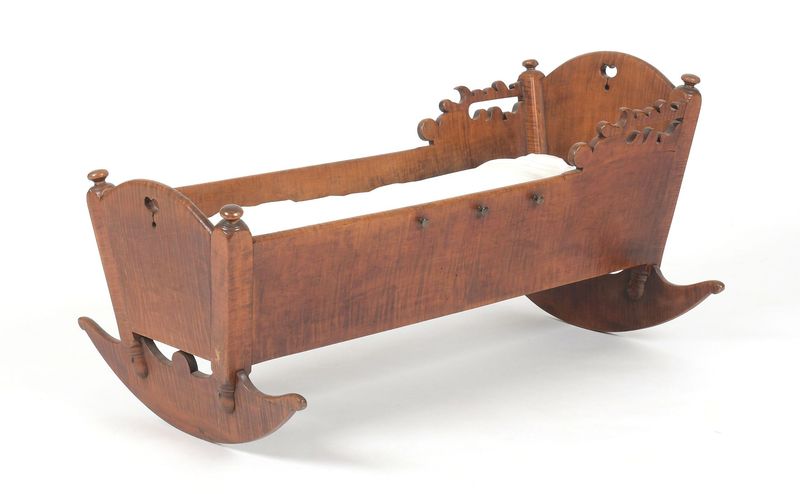
Pennsylvania families are creating fierce competition for early 20th-century baby cradles, particularly those crafted by Amish and Mennonite woodworkers. Their connection to family heritage and sustainable parenting practices makes them emotionally resonant purchases beyond mere decoration.
Lancaster County cradles with documented provenance routinely sell within hours of being listed. Many buyers are young parents seeking alternatives to mass-produced nursery furniture, willing to pay premium prices for pieces with character and history.
The most valuable examples feature hand-turned spindles, gentle rocking mechanisms, and untouched original finishes. If you’re considering selling, documentation of previous owners adds significant value – Pennsylvania collectors particularly prize pieces that have remained within the same family for generations.
10. Particleboard Accent Tables Worth Leaving Behind
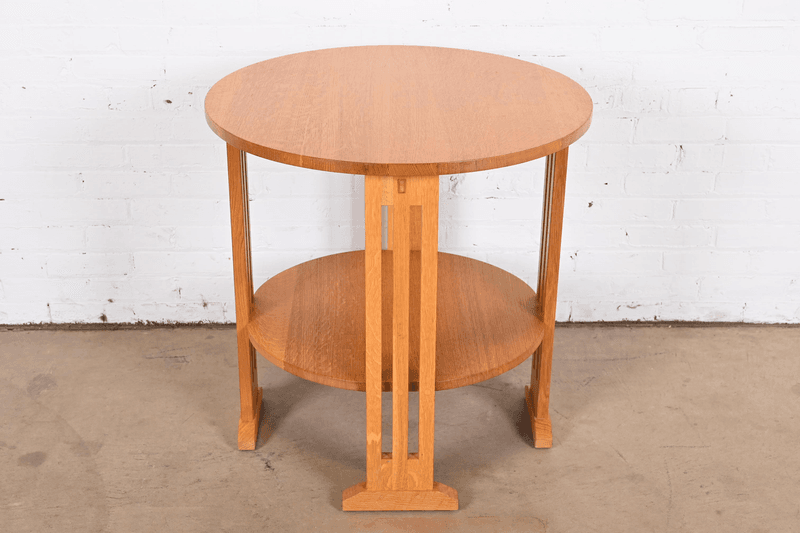
Pennsylvania dealers unanimously agree that particleboard accent tables from the 1980s-90s have hit rock bottom with virtually no chance of future appreciation. Their compressed wood construction simply doesn’t withstand humidity fluctuations common in Pennsylvania homes.
Even high-end retailers sold these pieces, often disguised with wood-look veneers that now peel and chip. The telltale signs include visible edge banding, unexpectedly light weight, and that distinctive “hollow” sound when tapped.
If you’re holding onto these pieces hoping for future value, I recommend selling now while they’re still functional. Modern buyers seeking vintage furniture specifically avoid these materials, as water damage is nearly impossible to repair once the particleboard begins to swell and deteriorate.
11. Fake Marble Veneered Chests Rapidly Declining
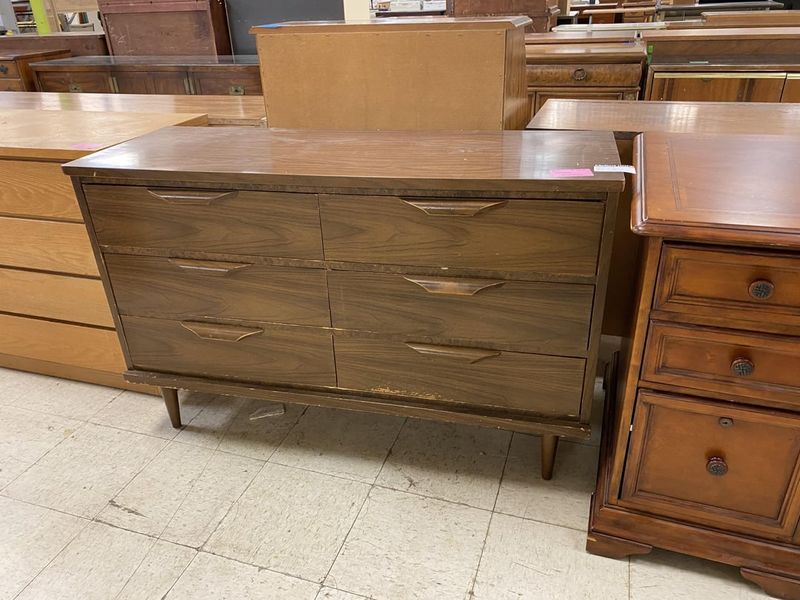
Once fashionable in 1980s Pennsylvania homes, fake marble veneered chests have become virtually impossible to sell in today’s authenticity-focused market. Their plastic-like surfaces and obvious artificial patterns clash with contemporary design preferences.
Bucks County estate liquidators report regularly donating these pieces after failed sales attempts. The synthetic materials used in these veneers often yellow with age and cannot be refinished like genuine wood or stone surfaces.
If you’re holding onto these pieces, consider repurposing the hardware and disposing of the furniture itself. Even budget-conscious first-time homebuyers are bypassing these pieces in favor of solid wood alternatives from big box stores or online retailers, making them poor candidates for long-term appreciation.
12. Plastic Laminate Desks Facing Total Value Collapse
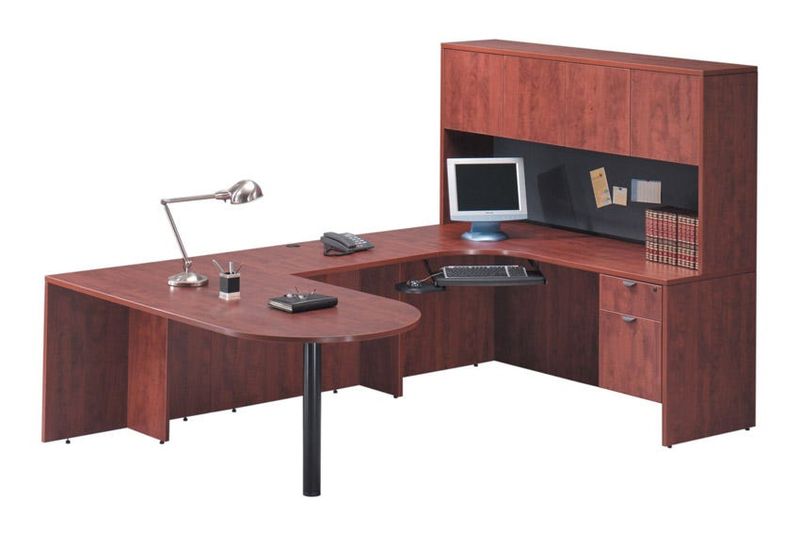
Plastic laminate desks from the 1970s-90s have become Pennsylvania antique dealers’ nightmare inventory. Their dated appearance, susceptibility to damage, and association with institutional settings make them virtually unsellable in today’s market.
Even well-maintained examples from high-end manufacturers sell for pennies on the dollar compared to their original prices. The laminate surfaces cannot be refinished once damaged, and the underlying particleboard substrate often fails at stress points.
Many Pennsylvania recycling centers now accept these pieces for material recovery rather than resale. If you’re holding onto laminate desks, consider extracting any metal hardware or drawer slides before disposal – these components often have more value individually than the complete piece in today’s market.
13. Shoddy MDF Bookcases Now Practically Worthless
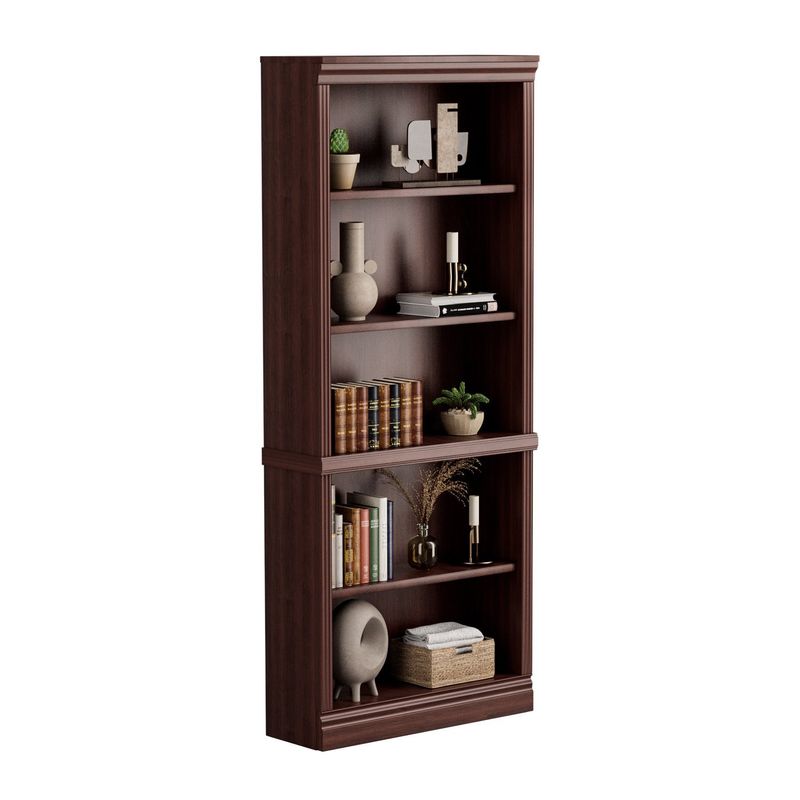
Medium-density fiberboard (MDF) bookcases have become the pariahs of Pennsylvania antique shops and consignment stores. Their compressed wood construction begins sagging within years, especially when loaded with actual books.
Scranton resellers report regularly turning away these pieces, regardless of condition. The telltale rounded edges, visible cam-lock fasteners, and unmistakable weight make them immediately identifiable to experienced buyers.
Pennsylvania’s seasonal humidity changes are particularly harsh on MDF, causing irreversible swelling and deterioration. If you’re looking to offload these pieces, consider donating to temporary housing organizations or college students any monetary value has essentially disappeared, and even transportation costs for resale often exceed potential profits.
14. Overstuffed Appliqué Headboards Rapidly Losing Appeal
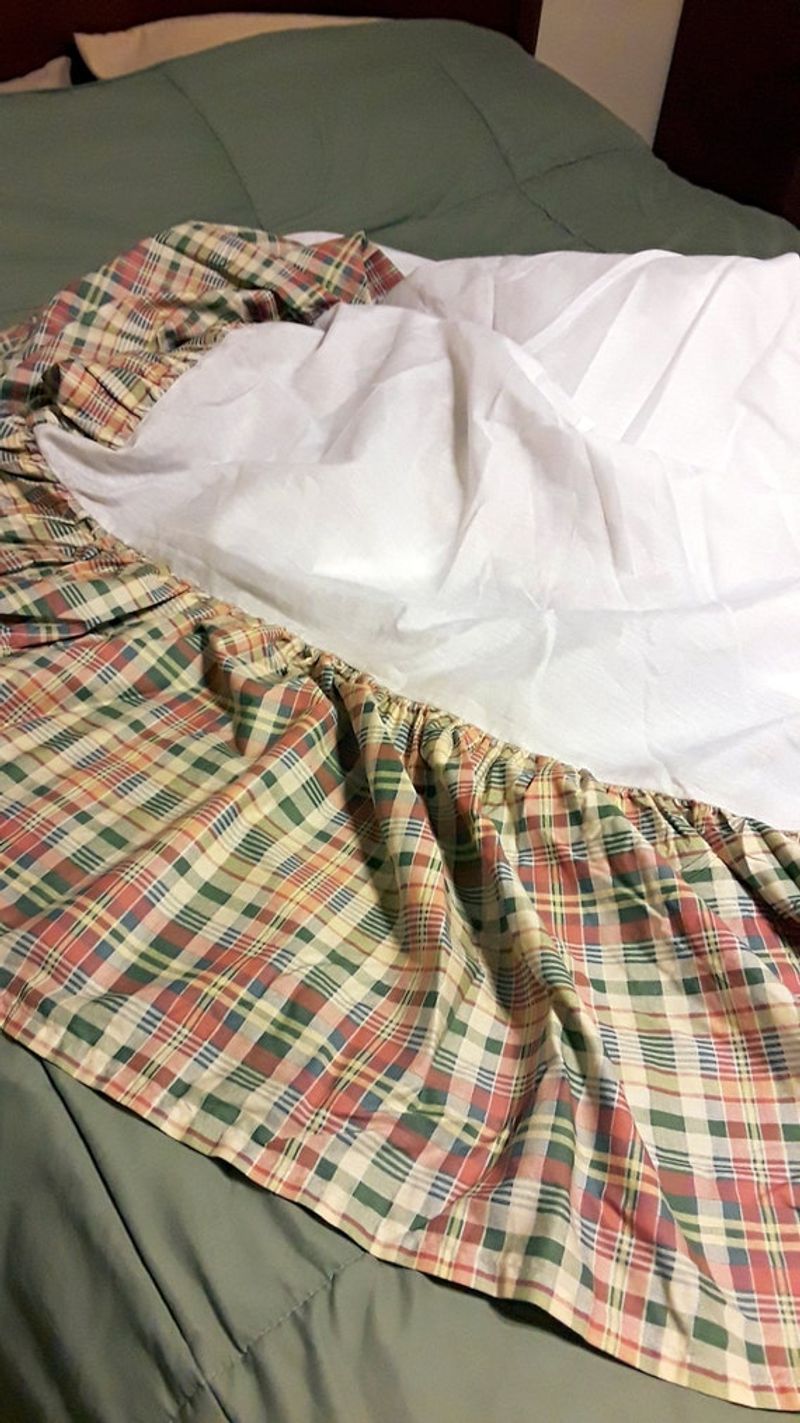
Remember those puffy, fabric-covered headboards with appliquéd designs that dominated 1980s-90s Pennsylvania bedrooms? Dealers throughout the state report these pieces sitting unsold for months, even at rock-bottom prices.
Their dated appearance, difficulty in cleaning, and questionable durability make them particularly unappealing to today’s buyers. The fabrics often fade unevenly or trap household odors that prove impossible to eliminate.
If you’re still using one of these headboards, consider selling now before values decline further. The most marketable examples are neutral colors without appliqué work, though even these command only modest prices. For headboards with sentimental value, reupholstering with contemporary fabrics might be worth considering, as the frames themselves sometimes have solid construction.
15. Vinyl-Covered Folding Chairs Face Market Rejection
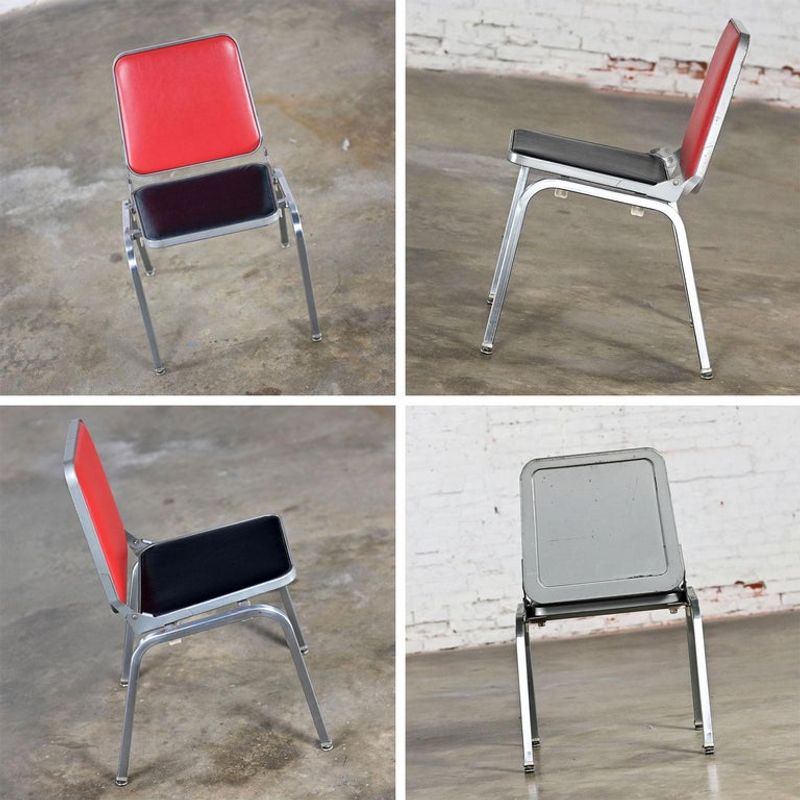
Vinyl-covered folding chairs from the 1970s-90s have virtually no collector value in Pennsylvania’s antique markets. Their institutional appearance, uncomfortable seating, and tendency to crack with age make them undesirable even for budget-conscious buyers.
York County flea market vendors report these chairs typically selling for less than $5 each, if at all. The vinyl covering inevitably splits at stress points, and the metal frames often develop weakness at the folding mechanisms.
If you’ve inherited a set of these chairs, consider donating them to community organizations for temporary use. Even reproduction mid-century designs in vinyl have poor resale value compared to authentic wooden examples. Pennsylvania collectors are increasingly focused on furniture with natural materials and craftsmanship – qualities these mass-produced pieces simply don’t possess.
16. Faux Rattan Patio Chairs Rapidly Deteriorating
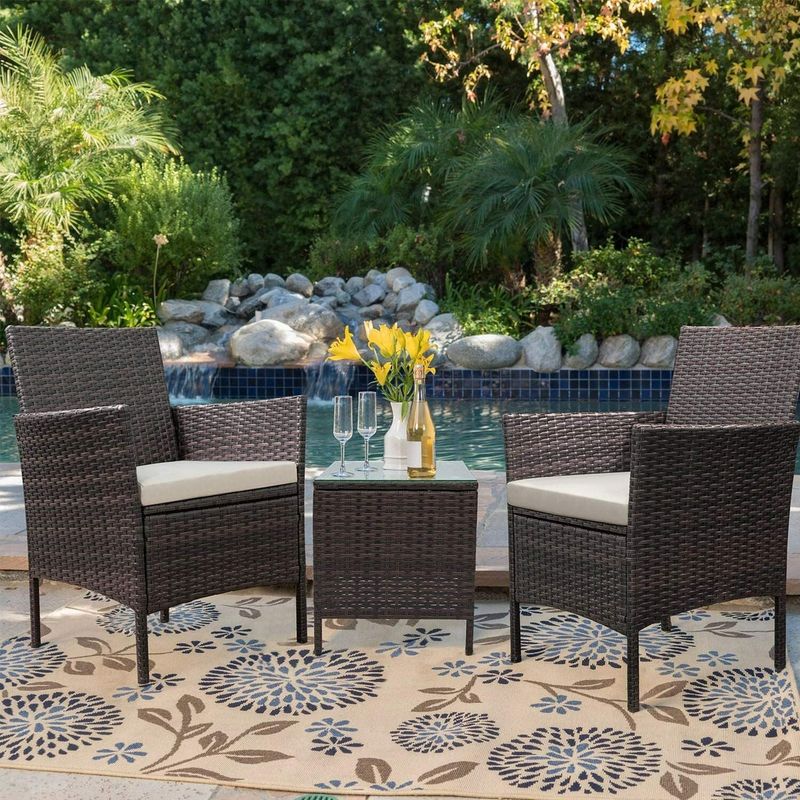
Pennsylvania’s seasonal climate is particularly harsh on faux rattan patio furniture, causing rapid deterioration that has decimated resale values. These plastic-based pieces typically crack, fade, and become brittle after just a few years of exposure to Pennsylvania’s freeze-thaw cycles.
Suburban Philadelphia estate sale specialists report regularly discarding these pieces after failing to sell them even at nominal prices. Unlike genuine rattan, these synthetic versions cannot be repaired once damaged.
If you’re still using faux rattan furniture, consider selling while the pieces remain functional, particularly before another winter season. The market shows no signs of improvement for these items, with younger buyers specifically seeking either authentic natural materials or modern weather-resistant designs rather than these problematic in-between options.
17. Mass-Produced Novelty Buffets Finding Few Buyers
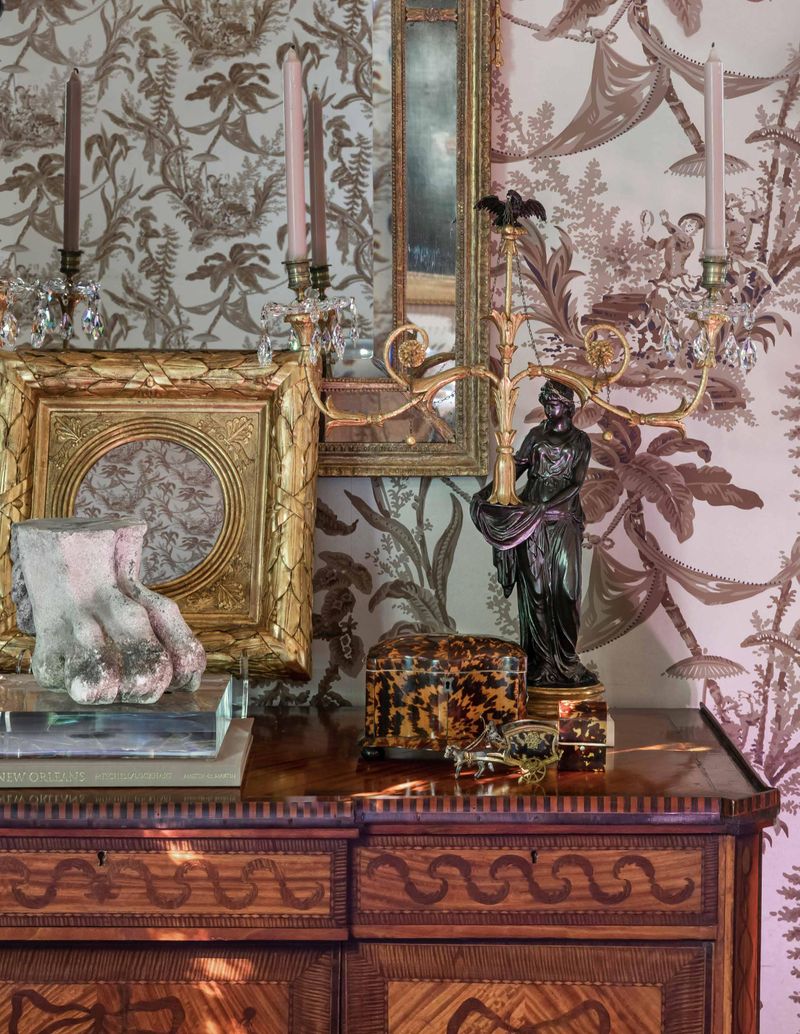
Those mass-produced novelty buffets with themed carvings and excessive ornamentation have become virtually impossible to sell in Pennsylvania’s more sophisticated antique markets. Their gaudy designs and poor construction quality have fallen dramatically out of favor with today’s buyers.
Altoona dealers report regularly turning away these pieces, regardless of condition or original cost. The overly ornate carvings collect dust in hard-to-clean crevices, and the thin veneers chip easily during moves.
Pennsylvania collectors now strongly prefer either authentic period pieces or clean-lined contemporary designs. If you’re holding onto one of these buffets, consider selling now before values decline further – focusing marketing efforts on community theaters or themed restaurants might yield better results than traditional antique channels.
18. Painted Pine Cubbies No Longer Commanding Interest
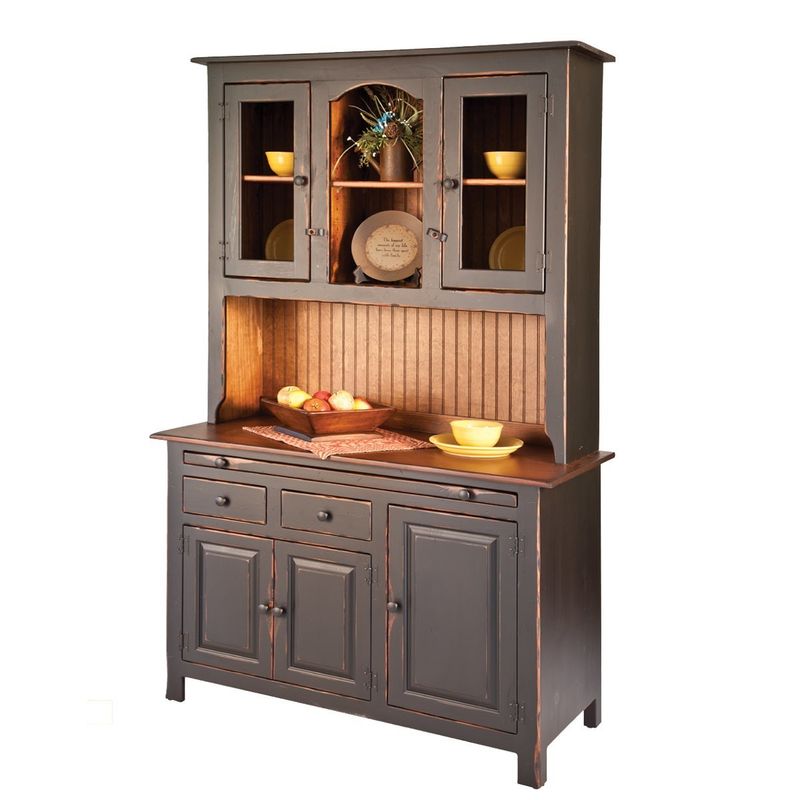
Once staples in Pennsylvania country-style homes, painted pine cubbies and shelving units have fallen dramatically from favor. Their cutesy aesthetic and limited functionality make them increasingly difficult to sell in today’s more minimalist market.
Gettysburg antique mall vendors report these pieces often sitting unsold for months, even at drastically reduced prices. The painted finishes tend to chip and wear unevenly, revealing the low-grade pine underneath.
If you’re considering offloading these pieces, target markets like craft fairs or country decor enthusiasts rather than traditional antique channels. Pennsylvania buyers are increasingly seeking furniture with either authentic historical significance or modern functionality – these decorative pieces offer neither, explaining their rapid decline in value throughout the state’s antique markets.

